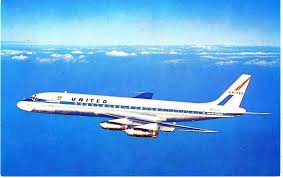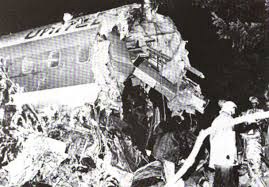
On December 28, 1978, United Airlines Flight 173 departed from John F. Kennedy International Airport in New York City, bound for Portland, Oregon. The flight, operated by a McDonnell Douglas DC-8, carried 181 passengers and eight crew members. What began as a routine cross-country journey would end in tragedy near Portland International Airport — and forever change the way airlines train their crews and manage cockpit communication.
The flight was commanded by Captain Malburn “Buddy” McBroom, an experienced pilot with over 27,000 flight hours. Alongside him were First Officer Roderick Beebe and Flight Engineer Forrest Mendenhall. The DC-8, tail number N8082U, had performed normally throughout most of the flight. But as the aircraft began its descent into Portland, an unexpected issue with the right main landing gear would lead to a chain of events that exposed critical flaws in cockpit communication and crew management.
As the crew prepared for landing, they experienced an unusual vibration and heard a loud thump when the landing gear was lowered. Unsure whether the gear was properly locked, Captain McBroom decided to enter a holding pattern southeast of Portland to troubleshoot the problem. For nearly an hour, the crew focused on diagnosing the landing gear issue and preparing for a potential emergency landing.
While this seemed prudent at first, it would prove disastrous. In their efforts to ensure the gear was safe, the crew lost track of another critical factor: fuel.
Throughout the hold, the flight engineer made several comments about the decreasing fuel levels, but his warnings were not fully acknowledged by the captain, who remained preoccupied with the landing gear concern. The first officer, too, expressed concern about the time spent in the air, but there was no decisive action. The crew failed to communicate their worries assertively enough, and the captain failed to manage the situation effectively.

At approximately 6:13 p.m., after more than an hour of circling, all four engines flamed out from fuel exhaustion. The DC-8 began to lose altitude rapidly. Captain McBroom attempted to glide the powerless aircraft toward Portland International Airport, but it was too late. The plane crashed into a wooded suburban area near the town of Gresham, Oregon, about six miles short of the runway.
Of the 189 people onboard, 10 lost their lives — including two crew members and eight passengers. Many others suffered serious injuries, but remarkably, the majority survived the impact due to the relatively controlled nature of the crash.
The National Transportation Safety Board (NTSB) investigation concluded that the probable cause of the accident was the captain’s failure to properly monitor fuel state while troubleshooting the landing gear issue. The report also noted that contributing factors included ineffective communication and poor cockpit resource management among the crew.

This tragedy became a turning point in aviation safety. Before Flight 173, airline culture was heavily hierarchical — captains were rarely questioned by subordinates. Afterward, the industry recognized that such structure could be dangerous. The concept of Crew Resource Management (CRM) was born from this realization.
CRM emphasized teamwork, open communication, and assertiveness among all crew members, regardless of rank. It trained pilots to work collaboratively, ensuring that critical warnings — such as low fuel — would never again be ignored due to deference or distraction.
Today, every major airline in the world incorporates CRM into pilot training, a direct legacy of the lessons learned from United Airlines Flight 173. While the crash was tragic, it reshaped aviation safety and saved countless lives in the decades that followed.


